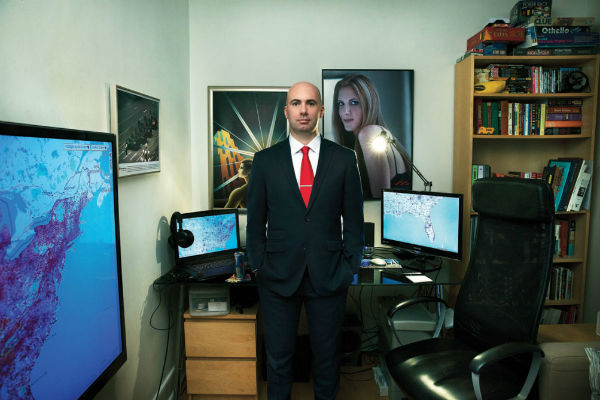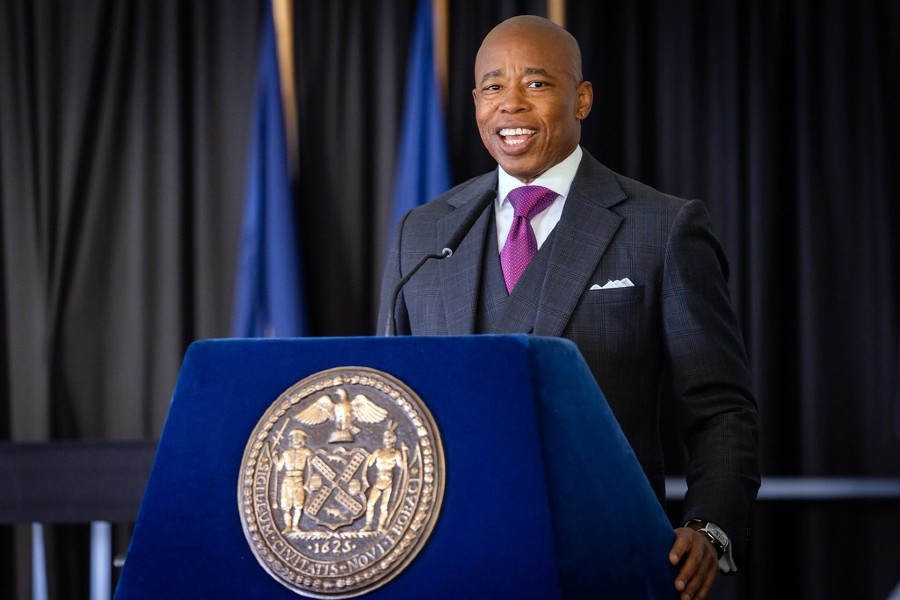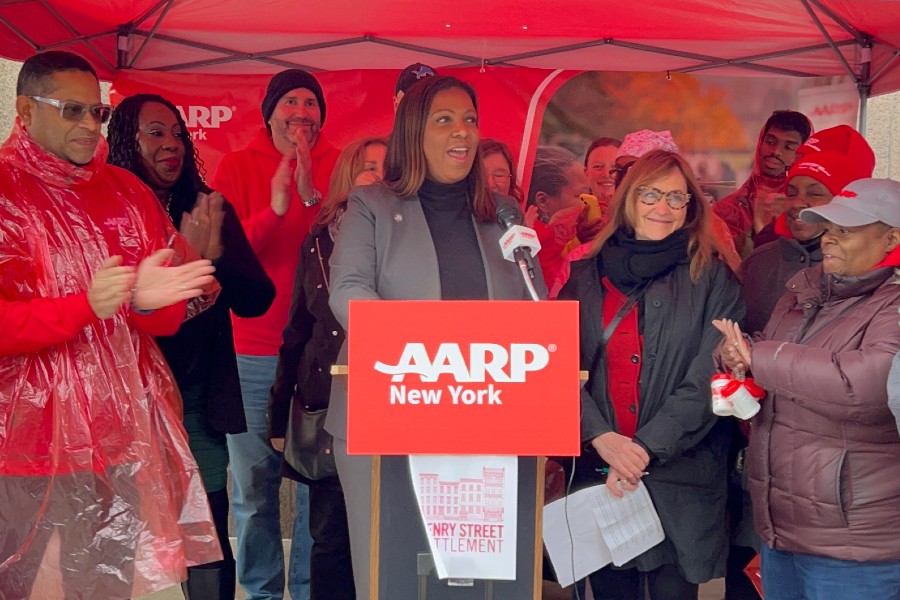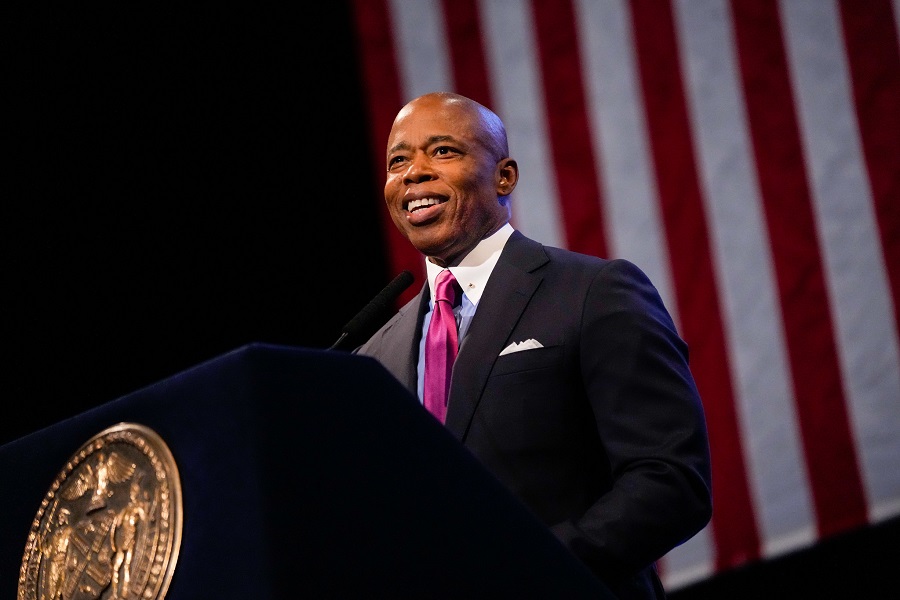 Parked in front of a seductive portrait of Ann Coulter and an array of computer screens inside a home office in Harlem, Matt Braynard, former director of technology for Donald Trump’s presidential campaign, welled up with emotion as he recounted his experience attending Trump’s inauguration a week earlier.
Parked in front of a seductive portrait of Ann Coulter and an array of computer screens inside a home office in Harlem, Matt Braynard, former director of technology for Donald Trump’s presidential campaign, welled up with emotion as he recounted his experience attending Trump’s inauguration a week earlier.
It was not the ceremony itself, but what happened afterward, when Braynard spotted a pale teenager in a red hat and a gray hoodie standing on a street corner near the Capitol holding a sign with a picture of a cartoon frog and the message “LOVE NOT HATE.” Struck by the display, Braynard made a beeline for the kid, shook his hand and enlisted his wife to take a photograph of them together.
“I felt like I had found a friend that I hadn’t spoken to in a long time,” recalled Trump’s misty-eyed onetime data guru, who had never met the teenager before in his life. “It was, like, immediate connection.”
The chance encounter was a rare in-real-life meeting of veterans of the Great Meme War. That’s the grandiose name given—only half ironically—to the decentralized efforts of a swarm of anonymous internet nerds to harass Trump’s detractors and flood the Web with pro-Trump, anti-Hillary Clinton propaganda. Their weapons of choice were memes, bits of reproducible culture whose most recognizable form is shareable internet photos, like cats behaving adorably or Clinton sending a text message, with captions meant to be funny.
Braynard showed me a badge he ordered online to memorialize his service in the Great Meme War. It features Pepe the Frog—a cartoon symbol of mischievous fun or racist hatred, depending on whom you ask—and the name of his make-believe battalion, “The 1st Deplorables.”
Veterans of the Great Meme War brag that they won the election for Trump. Just about everyone else, if they’re aware of these efforts at all, assumes they amounted to little more than entertainment for bored geeks and some unpleasant episodes for the targets of its often racist and sexist harassment campaigns. After all, the idea that a swarm of socially alienated trolls played a meaningful role in a multibillion-dollar presidential campaign by, among other gambits, relentlessly spreading images of a cartoon frog is at least as ridiculous as the idea that a billionaire TV entertainer could win that campaign.
There is no real evidence that memes won the election, but there is little question they changed its tone, especially in the fast-moving and influential currents of social media. The meme battalions created a mass of pro-Trump iconography as powerful as the Obama “Hope” poster and far more adaptable; they relentlessly drew attention to the tawdriest and most sensational accusations against Clinton, forcing mainstream media outlets to address topics—like conspiracy theories about Clinton’s health—that they would otherwise ignore. And they provoked a variety of real-world reactions, from Clinton’s August speech denouncing the alt-right to the Anti-Defamation League’s designation of Pepe as a hate symbol to—after the election—the armed assault on a Washington pizzeria wrongly believed to be hiding sex slaves.
Part of the power of memes has always been their organic, grass-roots quality: They bubble up from the fever swamps of the internet, shrouded in anonymity, as agents of chaos and mockery. But in this election, something seemed to change. They began colliding with a real campaign operation and doing useful work, seemingly always pushing in one direction. Curious about what happened, I tracked down and interviewed a number of veterans of the Great Meme War, along with others who hung out in the same dark corners of the internet and watched it all unfold. It turns out that, as anonymous online pranksters go, they’re surprisingly organized and motivated. It also turns out that the Trump campaign, which spent relatively little on messaging, paid rapt attention to meme culture from the start. It took it seriously, even pushing some memes out to the candidate’s millions of Twitter followers.
Trump’s campaign will not be the last to tap into this subculture. Internet troll Charles Johnson, a self-commissioned general in the Great Meme War with close ties to Trump’s political operation, claimed he has fielded about a dozen post-election phone calls from the Washington area about the political potential of memes. “If you’re trying to win an election and you have a million dollars to spend on political ads or $100,000 to spend on trolling,” he said, “I would advise everyone to spend the hundred thousand on the troll.”
If the soldiers in the Great Meme War are even partly right about their capabilities, then their efforts have profound implications for the future of politics. But before tackling that question, it is worth asking how, in the first place, a community of some of the savviest, most subversive internet users became a hotbed of support for a 70-year-old white billionaire who refers to Apple products as “damn computers and things.” And for that matter, what exactly is a meme, anyway?
Photo credit: As Donald Trump’s technology director, Matt Braynard, pictured at his home office in Harlem, was just one of several meme enthusiasts inside the candidate’s campaign headquarters. | Jesse Dittmar for Politico Magazine
Become a Harlem Insider!
By submitting this form, you are consenting to receive marketing emails from: Harlem World Magazine, 2521 1/2 west 42nd street, Los Angeles, CA, 90008, https://www.harlemworldmagazine.com. You can revoke your consent to receive emails at any time by using the SafeUnsubscribe® link, found at the bottom of every email. Emails are serviced by Constant Contact








